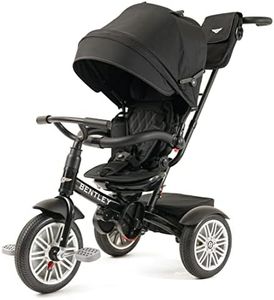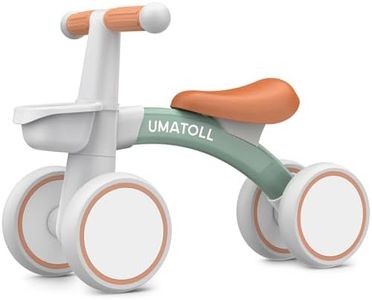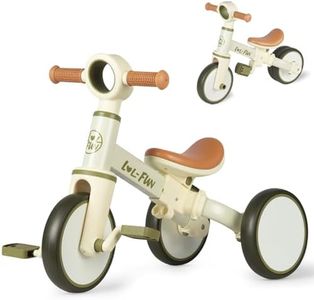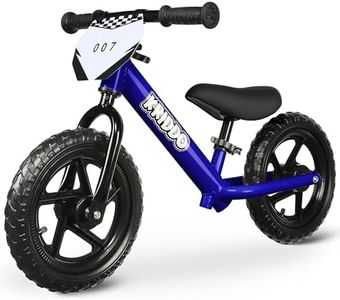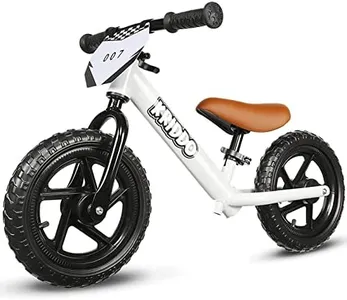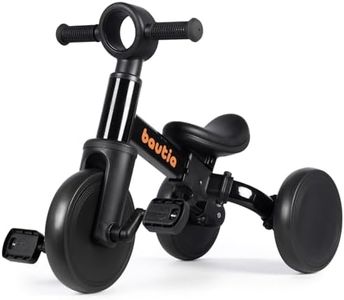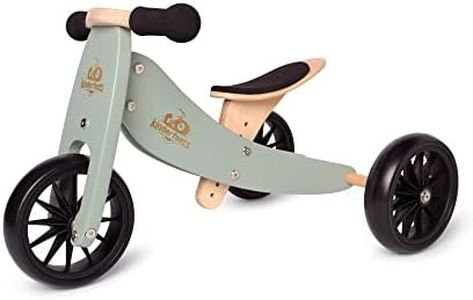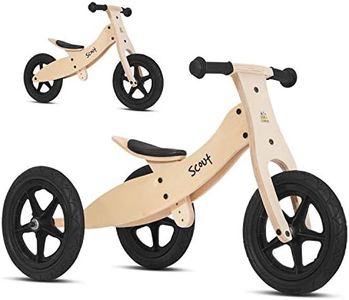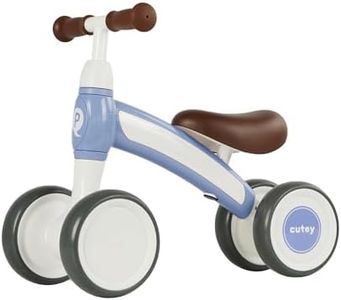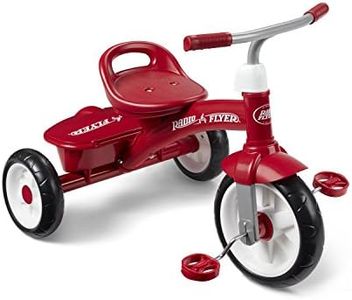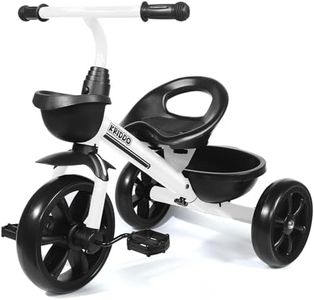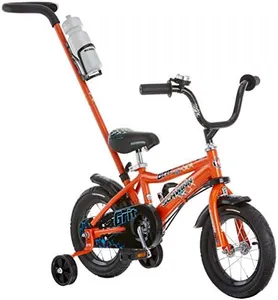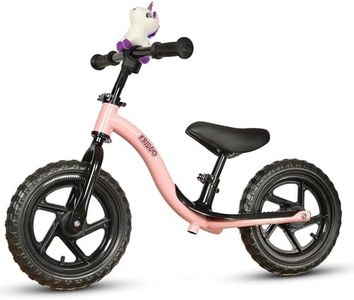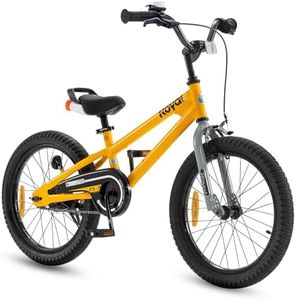We Use CookiesWe use cookies to enhance the security, performance,
functionality and for analytical and promotional activities. By continuing to browse this site you
are agreeing to our privacy policy
10 Best Toddler Bikes
From leading brands and best sellers available on the web.Buying Guide for the Best Toddler Bikes
Choosing a toddler bike is an exciting step because it introduces your child to the joys of riding, boosts their confidence, and builds important physical skills. The best way to pick a bike for your toddler is to focus on safety, fit, and the kind of riding experience you want them to have. Remember that at this young age, comfort and ease of use are more important than fancy features. Understanding a few key specifications will help you find a bike that matches your child's needs and abilities, ensuring a fun and safe introduction to cycling.Bike TypeThere are two main types of bikes for toddlers: balance bikes and pedal bikes with training wheels. Balance bikes have no pedals and are designed to help kids learn balance and steering first. Pedal bikes usually come with removable training wheels that assist with stability as the child learns to pedal. Balance bikes are great for younger or first-time riders (usually ages 18 months to 4 years), as they help develop coordination and confidence, while pedal bikes with training wheels can be better for older toddlers who are ready to start pedaling. Think about your child's skill level and which style will give them the best start.
Wheel SizeWheel size affects how well the bike fits your child, and it is usually measured in inches. Toddler bikes commonly come in 10-inch, 12-inch, or 14-inch wheels. Smaller wheels (10-12 inches) work best for younger or shorter children, while 14-inch wheels are suitable for taller or older toddlers. The right wheel size allows your child to easily touch the ground with their feet when sitting on the saddle, making the bike safer and easier to control. Always check that your child's inseam matches the minimum seat height of the bike.
WeightThe weight of a toddler bike is important because heavier bikes can be difficult for small children to handle, steer, or pick up if they fall. Lightweight bikes are generally easier for toddlers to use and enjoy. Most toddler bikes weigh between 5 to 10 pounds, with some going up to 15 pounds. Ideally, the bike should not weigh more than a third of your child’s body weight. Pick a lighter model if your child is younger, smaller, or just starting to ride.
Frame MaterialToddler bikes are usually made from metal (steel or aluminum) or sometimes wood (for some balance bikes). Steel frames are sturdy but heavier, while aluminum frames are lighter and often rust-resistant, making them easier for small children to maneuver and carry. Wooden bikes are light and stylish but may not be as durable for frequent outdoor use. Consider where the bike will be used, how often, and if your child needs to move the bike themselves when deciding on frame material.
AdjustabilityLook for bikes with adjustable seat posts and handlebars. This feature allows the bike to grow with your child, offering a better fit over a longer time. Adjustable parts mean you can raise or lower the seat and sometimes the handlebars as your child grows taller or becomes more confident. A bike that can be adjusted is a good investment because it stays comfortable and safe for your child as they develop.
BrakesSome toddler bikes come with hand brakes, while others rely solely on the child stopping with their feet. For very young toddlers, foot-powered stopping is usually enough. As children get closer to age 4 or are ready to transition to pedal bikes, having a hand brake can help them practice for future cycling and provide an extra safety feature. Choose a bike without brakes for the very youngest riders and consider adding this feature as your child advances.
